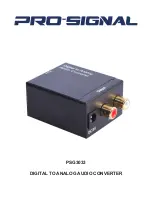
7XV5662-0AD00
English
C53000-B1174-C205-1
35
Use
The Communication Converter 2 MBit/s (CC–2M) is a peripheral device which facilitates the
serial data exchange between two devices. A digital communication network is used for data
exchange. An E1 / T1 interface is used as the interface to the communication network. A
second CC–2M reconverts the data on the opposite side into the data which can be read by
the second device (Figure 14). This conversion permits that data are exchanged between
two devices.
The connection to the protection device or other devices with a serial interface is interference
free and established via a fibre optic conductor connection (FO). The data transfer between
the protection devices is a point–to–point connection.
Two optical interfaces and one electric interface are available for connection of the serial
devices. The optical interfaces can be configured independently of each other as asynchro-
nous or synchronous interfaces.
The CC–2M allows controlling two serial interfaces / protection data interfaces at the same
time. In the case of a synchronous transmission mode between CC–2M and the protection
device 512 kBit/s (Comm.–Converter 512kbit/s) must be set for transmission rate at the
protection device. For an asynchronous connection the transmission rate is 1.2 kBAUD to
115.2 kBAUD. No further parameterization for the BAUD–rate.
An additional electric RS232 interface permits connecting devices via an asynchronous bit
transparent transmission up to 115.2 kBAUD. If used with DIGSI and SIPROTEC protection
devices the maximum admissible setting in DIGSI and the protection device is 57.6 kBAUD.
No further parameterization for the BAUD–rate.
The CC–2M supports simple commissioning of the entire communication paths. The param-
eter assignment of the CC–2M is done via jumper. It has a relay contact to output a “device
ready” signal (GOK/DR) and also has an extended range power supply unit covering the
entire normal DC and AC auxiliary voltage range. In addition, all important operating states
are signalled by LED.
Provided that the device supports the FM0 coding, a serial device with a synchronous
interface or, otherwise, with an asynchronous interface can be used instead of a protection
device.
Figure 14 Typical structure of a communication line
Protection
Device1
Protection
Device 2
CC-2M
CC-2M
E1/T1
E1/T1
SDH / PDH-Network
Protection
Device 1
Protection
Device 2
FO
FO
FO
FO
FO1/
LWL1
FO2/
LWL2
FO1/
LWL1
FO2/
LWL2
RS232
Device 3
RS232
Device 3
RS232
RS232
Содержание 7XV5662-0AD00
Страница 59: ...7XV5662 0AD00 C53000 B1174 C205 1 59 ...
















































